The week at a glance
- Thick-billed Warbler and Eastern Olivaceous Warbler on Shetland
- Ovenbird on Papa Westray, Orkney
- Sora on Tresco
- Grey-cheeked Thrush in Cork and Scilly
- Buff-bellied Pipits in Cornwall, Galway and Shetland
- Belated news of a Cedar Waxwing on Tiree
- Daurian Shrike in Cornwall
- Isabelline Wheatear still in Pembrokeshire, and a possible in Aberdeenshire
As usual, the avian highlights of the week came mainly from remote corners of Britain and Ireland. First in chronological order was belated news of a Cedar Waxwing on the island of Tiree. The bird unfortunately chose to settle on cotoneaster bushes in a private garden, from which it could not be coaxed, despite apples being provided in a more viewing-friendly location. It stayed put from 21st to 29th September, and several gripping photographs were obtained. The last representative of this Nearctic wanderer was a brief first-winter in County Mayo in November 2012, also in a garden, and assuming both are accepted the Tiree bird will be the fifth for Britain and Ireland. Next up was a Thick-billed Warbler at Geosetter (Shetland) on 4th, which prompted an expletive or two from our News Manager, as (just like last year's Eastern Kingbird) it turned up on the Friday afternoon as he was preparing to leave for his annual jaunt to the Azores. The warbler was only marginally more obliging than the waxwing, giving occasional flight views from a cereal field until the following evening, and it was not seen thereafter. The spotlight stayed on Shetland on 5th, when an Eastern Olivaceous Warbler was identified at Hoswick, again on the Mainland. This bird was altogether more accommodating and stayed until 9th at least, allowing some excellent photos to be obtained.

Cedar Waxwing, Tiree, Argyll (Photo: Jim Dickson)
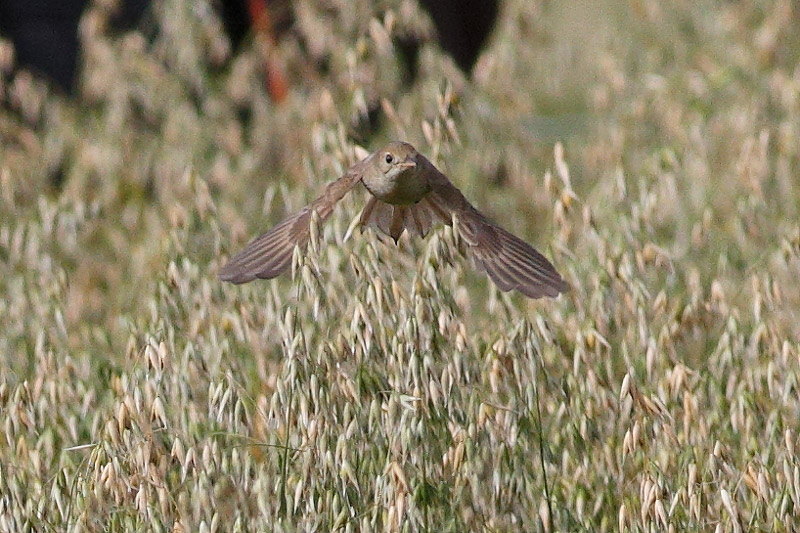
Thick-billed Warbler, Geosetter, Mainland, Shetland (Photo: Michael McKee)

Eastern Olivaceous Warbler, Hoswick, Mainland, Shetland (Photo: G Petrie)
Moving a little further south, on 6th an Ovenbird — the eighth for Britain and Ireland — was found, yet again in a private garden, on Papa Westray (Orkney). The bird apparently showed well and photographs were taken, but it was not seen the following day. As this review was in preparation on the afternoon of 9th, at the opposite end of the country a Sora was seen well from one of the hides on Tresco (Scilly). This is the first since a well-received bird at Gibraltar Point (Lincs) in 2006, the sixth for Scilly and the 19th overall for Britain and Ireland.
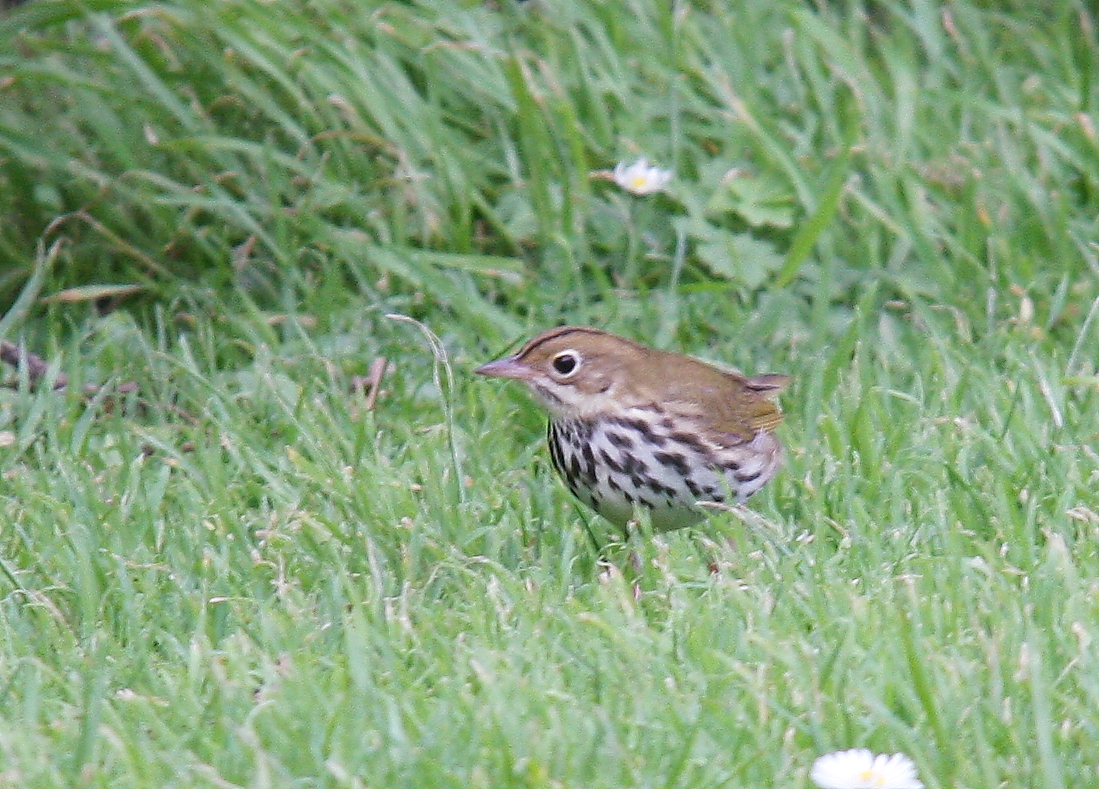
Ovenbird, Papa Westray, Orkney (Photo: Sean Davies)
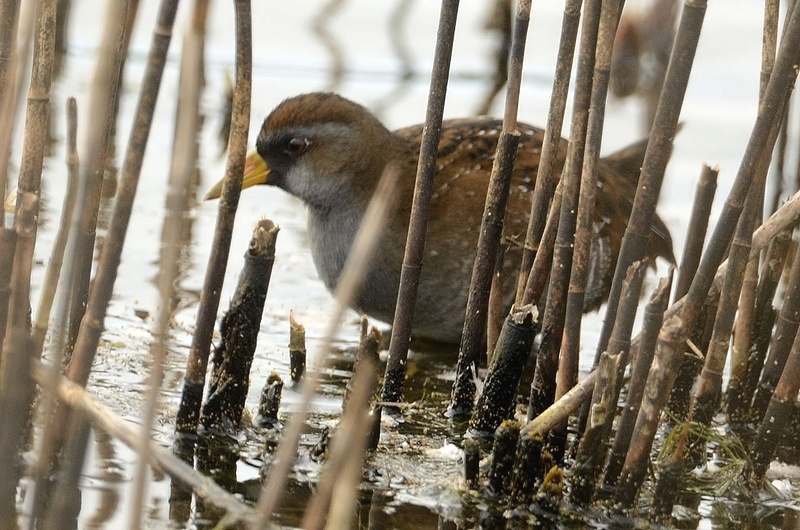
Sora, Tresco, Isles of Scilly (Photo: Dave Perrett)
The arrival of four Buff-bellied Pipits revived discussions as to whether the species still deserves its place in our "mega" category. The first two were at Inishmore (Galway) and Heddicliff (Foula), both from 5th to 8th, the third was photographed on playing fields on Yell (Shetland) on 6th but not the following day, and the fourth of the week was at Rumps Point (Cornwall) on 7th and 8th. A handsome adult male Daurian Shrike made several photographers' day at Pendeen from 4th to 7th. A Grey-cheeked Thrush was on Dursey Island (Cork) on 3rd and another was seen briefly on St Mary on 7th. An Eyebrowed Thrush was reported on St Martins (Scilly) on 9th.

Buff-bellied Pipit, Mid Yell, Yell, Shetland (Photo: Dougie Preston)
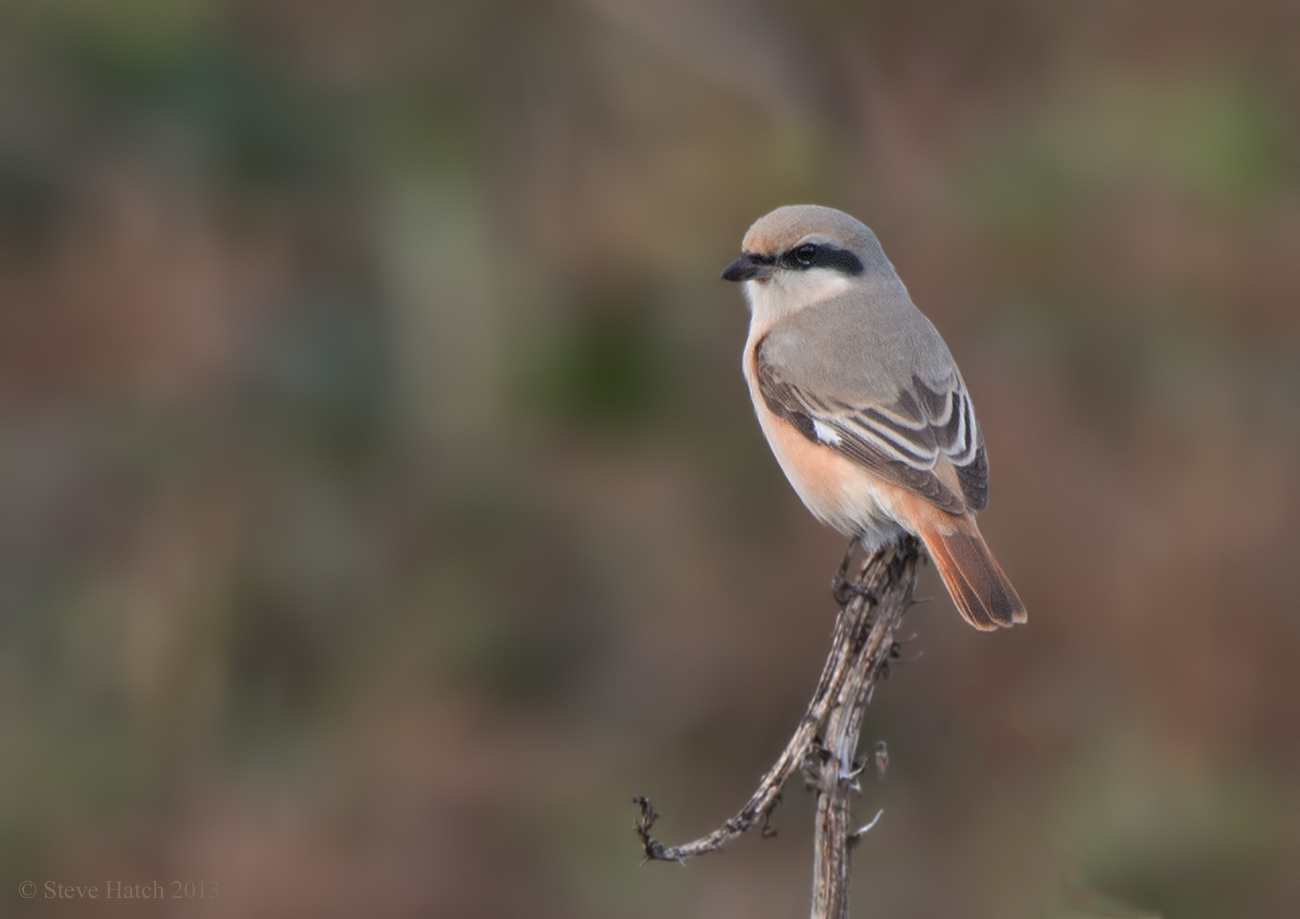
Daurian Shrike, Pendeen, Cornwall (Photo: Steve Hatch)
Longer-staying megas included the Pied-billed Grebe on Achill Island (Mayo), reported again for the first time since mid-September though it has presumably been lurking around Sruhillbeg Lough all along. The White's Thrush was again reported at Covean on St Agnes (Scilly) on 3rd, again elusive and not seen since. The Isabelline Wheatear continued to perform beautifully for photographers assembled on the cliff-tops overlooking Skomer at Martin's Haven (Pembrokeshire) to 9th, and another was reported (but not confirmed or seen thereafter) in Aberdeen on 7th. Also in the unconfirmed category were a dark-morph Eleonora's Falcon at Pendeen (Cornwall) on 7th and a claimed Pallas's Grasshopper Warbler at Spurn (East Yorks) that may have been the same bird as a Grasshopper Warbler later trapped and ringed.
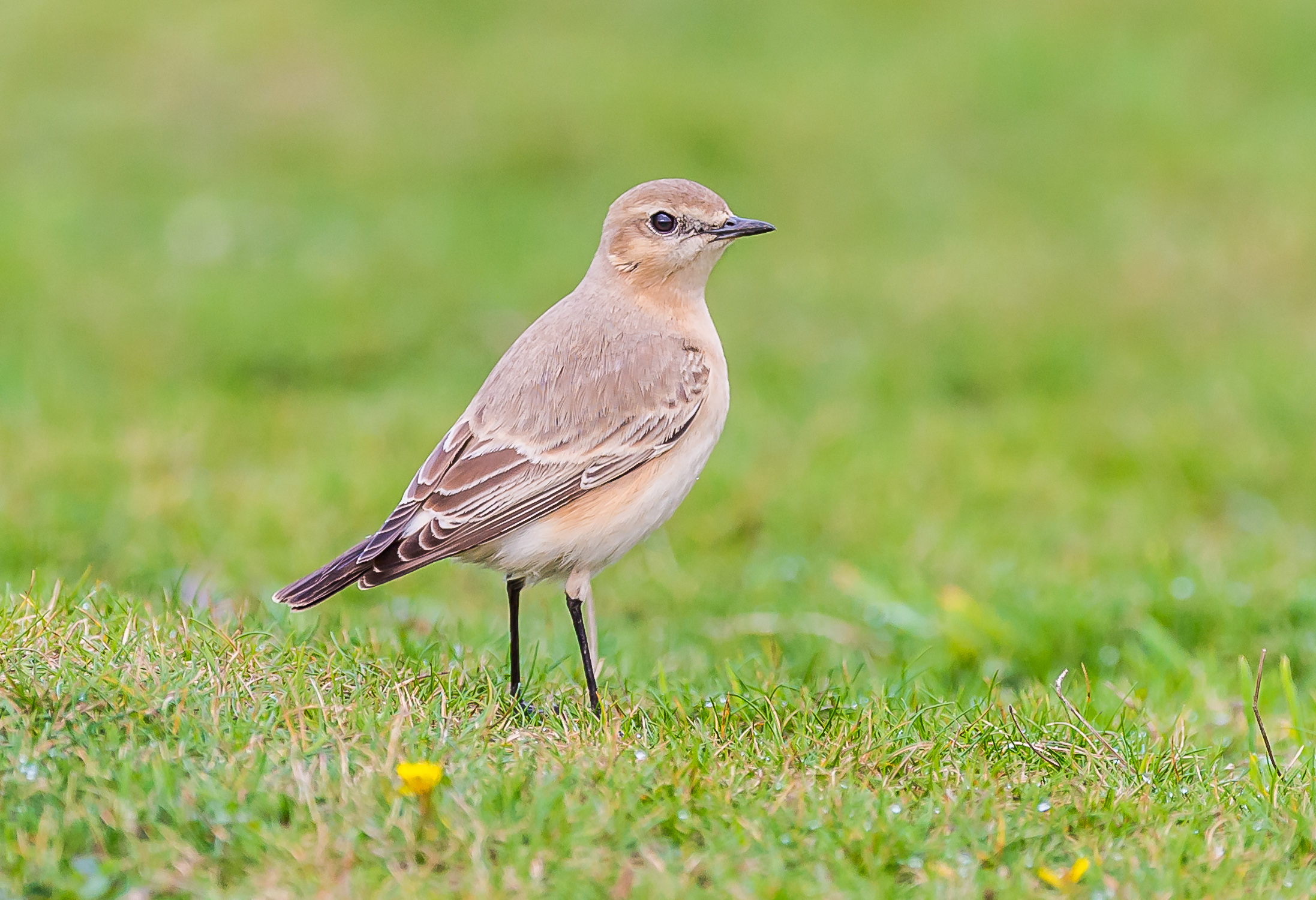
Isabelline Wheatear, Martin's Haven, Pembrokeshire (Photo: John Stanton)
It's a sign of the times when geese start appearing in the Review of the Week. This week a Black Brant and a possible adult Grey-bellied Brant were reported with Pale-bellied Brents from Kinnegar Shore on Belfast Lough, the first report of both forms this autumn. The first vagrant Canada Goose was also reported, a Richardson's at Loch Gruinart (Islay) on 9th. On a similar wintry note, a drake American Wigeon, presumably last winter's returning bird last seen in April, was back at Udale Bay (Highland) on 7th, and a probable in eclipse plumage was reported from Whitesands Bay in Pembrokeshire the same day. The Black Duck was still on Achill Island, having returned to Sruhill Lough after its September excursion to the nearby Lough Doo. The three Blue-winged Teal at Boultham Mere (Lincs) and the single drake at Frankfield Loch (Clyde) stayed put for a further week, as did the Lesser Scaup at Pennington Flash (Greater Manchester), the latter gradually coming out of eclipse plumage as it enters its fifth week. Other Lesser Scaup were on Cardiff Bay (Glamorgan) and Blagdon Lake (Somerset), the latter a "possible", but the only Green-winged Teal of the week was the drake still at Martin Mere. Three drake Surf Scoters were logged, off Murcar (Aberdeenshire) and Yinstay (Orkney) on 5th, and in the South of Taransay (Outer Hebrides) on 6th.

Lesser Scaup, Pennington Flash CP, Greater Manchester (Photo: John Tymon)

Green-winged Teal, Martin Mere WWT, Lancashire (Photo: Eddie Seal)
The influx of Glossy Ibis continued, though the flocks seem to have dispersed somewhat, with birds in Anglesey, Carmarthenshire, Cheshire, Clwyd, Cornwall, Cumbria, Devon, Dorset, Dumfries and Galloway, East Yorkshire, Essex, Kent, Lancashire, Greater Manchester, Northumberland, Shropshire, Somerset and Staffordshire. The largest groups were of seven on the Kent Estuary (Cumbria), five on the Loughor Estuary (Carmarthenshire), four on the Solway Firth in Dumfries & Galloway and four west of Bolton (Gtr Manchester). For the first time in a few weeks, a couple of Night Herons were reported, both brief flyovers along the Severn Estuary and quite probably referring to the same bird: a possible near Steart (Somerset) on 4th and another at Frampton-on-Severn (Glos) on 9th. The only Cattle Egret was at Harty Ferry on the Isle of Sheppey (Kent) on 3rd. A popular juvenile Purple Heron put on a show on St Mary's (Scilly), mostly at Lower Moors, from 3rd to 8th. Great White Egrets were well represented in England from Yorkshire southwards, the outliers a bird at Rockcliffe Marsh (Cumbria) and another at Kilcoole (Wicklow). An exceptional nine were at Dungeness (Kent) on 4th.
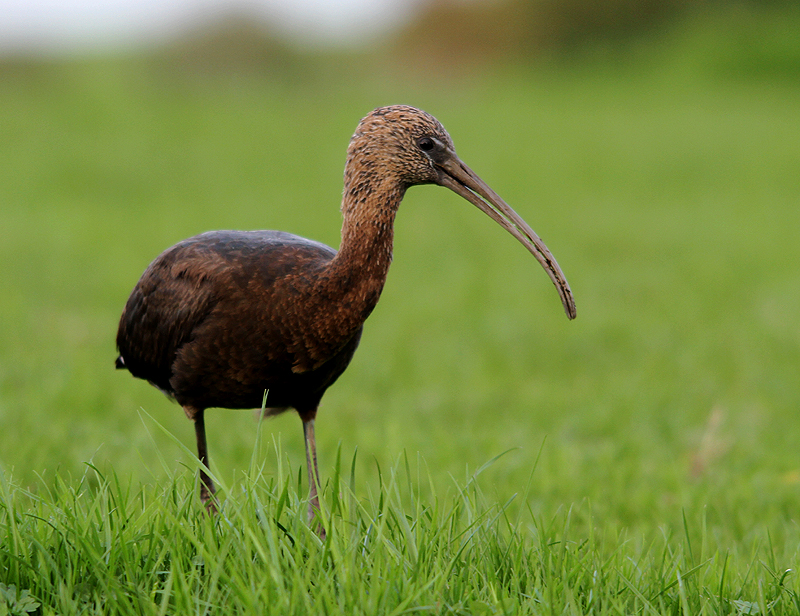
Glossy Ibis, High Rid Reservoir, Greater Manchester (Photo: Steve Seal)
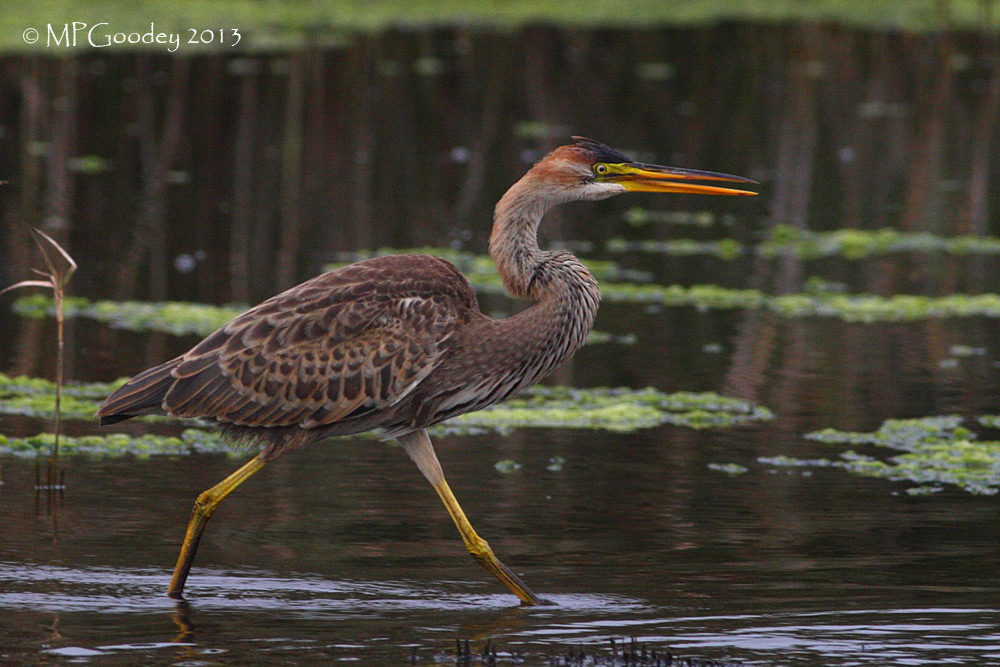
Purple Heron, St. Mary's, Isles of Scilly (Photo: Martin Goodey)
Honey Buzzards were reported from eight sites, mostly on the east coast (from Castle Dene in Co. Durham south to Worth Marsh in Kent) but also from Shoreham (West Sussex) and Marazion and Land's End (Cornwall).
Corncrakes are still on the move, producing reports from Haroldswick (Shetland), Barns Ness (Lothian) and South Milton Ley (Devon). There was a reasonable showing of Spotted Crakes, birds being reported from Ynys-Hir (Ceredigion), Herrington CP (Durham), St Mary's (Scilly) and Oare Marshes (Kent), this last site hosting a long-staying and camera co-operative individual.

Spotted Crake, Herrington CP, Durham (Photo: D Johnson)
The Lesser Yellowlegs and Black-winged Stilt at Hayle (Cornwall), the former last seen on 7th, the latter there to 9th at least, made for a handy double bonus for birders bound for the Scillonian. In the same neck of the woods was an American Golden Plover around St Levan on 8th and 9th. Others were in Donegal, Galway, Highland, Londonderry, Lincolnshire, Mayo, the Outer Hebrides and Wexford, but the most popular was a bird at Old Moor RPSB (South Yorkshire) to 7th. A juvenile Long-billed Dowitcher was an unexpected visitor to Rhaslas Pond above the Rhymney Valley in Glamorgan on 8th and 9th; meanwhile the bird on the Hampshire marshes reappeared after a week or so's absence and entered its third month in the area. Other Lesser Yellowlegs, apart from the Hayle bird, were at Exnaboe (Shetland) to 3rd, Muckrush (Galway) and Bowling Green Marsh (Devon) to 5th, the National Wetland Centre (Carmarthenshire) to 7th and Cliffe (Kent) to 8th.

Lesser Yellowlegs, Hayle Estuary, Cornwall (Photo: Tony Mills)

Black-winged Stilt, Hayle Estuary, Cornwall (Photo: John Lee)

American Golden Plover, Old Moor RSPB (Dearne Valley), South Yorkshire (Photo: Paul Thomas)

Long-billed Dowitcher, Rhaslas Pond, Glamorgan (Photo: Mike Hogan)
Two Spotted Sandpipers were found on Irish islands, the first on Tory Island (Donegal) on 6th and the other on Inishmore (Galway) the following day. Two days later, further up the Galway coast, a White-rumped Sandpiper turned up on Inishbofin, and another was seen briefly in flight at Donna Nook (Lincs) on 7th. Up to five Baird's Sandpipers were present: at Black Rock Strand (Kerry) and Kilcoole (Wicklow) on 5th, a possible at Gibraltar Point (Lincs) on 6th, at Slimbridge (Glos) from 7th to 9th and at Ballycotton (Cork) on 9th. Pectoral Sandpipers were reported from Aberdeenshire, Cambridgeshire, Cheshire, Dorset, East Yorkshire, Fife, Kent, Lancashire, Lincolnshire, Norfolk, Nottinghamshire, Orkney, the Outer Hebrides, Powys, Rutland, Somerset, Staffordshire, Suffolk and Surrey, the last a remarkable record of a bird photographed flying over on 5th.

Pectoral Sandpiper, Trimley Marshes SWT, Suffolk (Photo: John Richardson)
Only four Buff-breasted Sandpipers were seen this week, and only one, on Fair Isle on 9th, was new. The others were on Frampton Marsh (Lincs), Sanday (Orkney) and St Agnes (Scilly). The only Red-necked Phalarope of the week was a welcome visitor to Fairburn Ings (W Yorks), whereas several sites reported Grey Phalaropes, notably lingering birds in Dorset on Brownsea Island and (more briefly) at Abbotsbury.
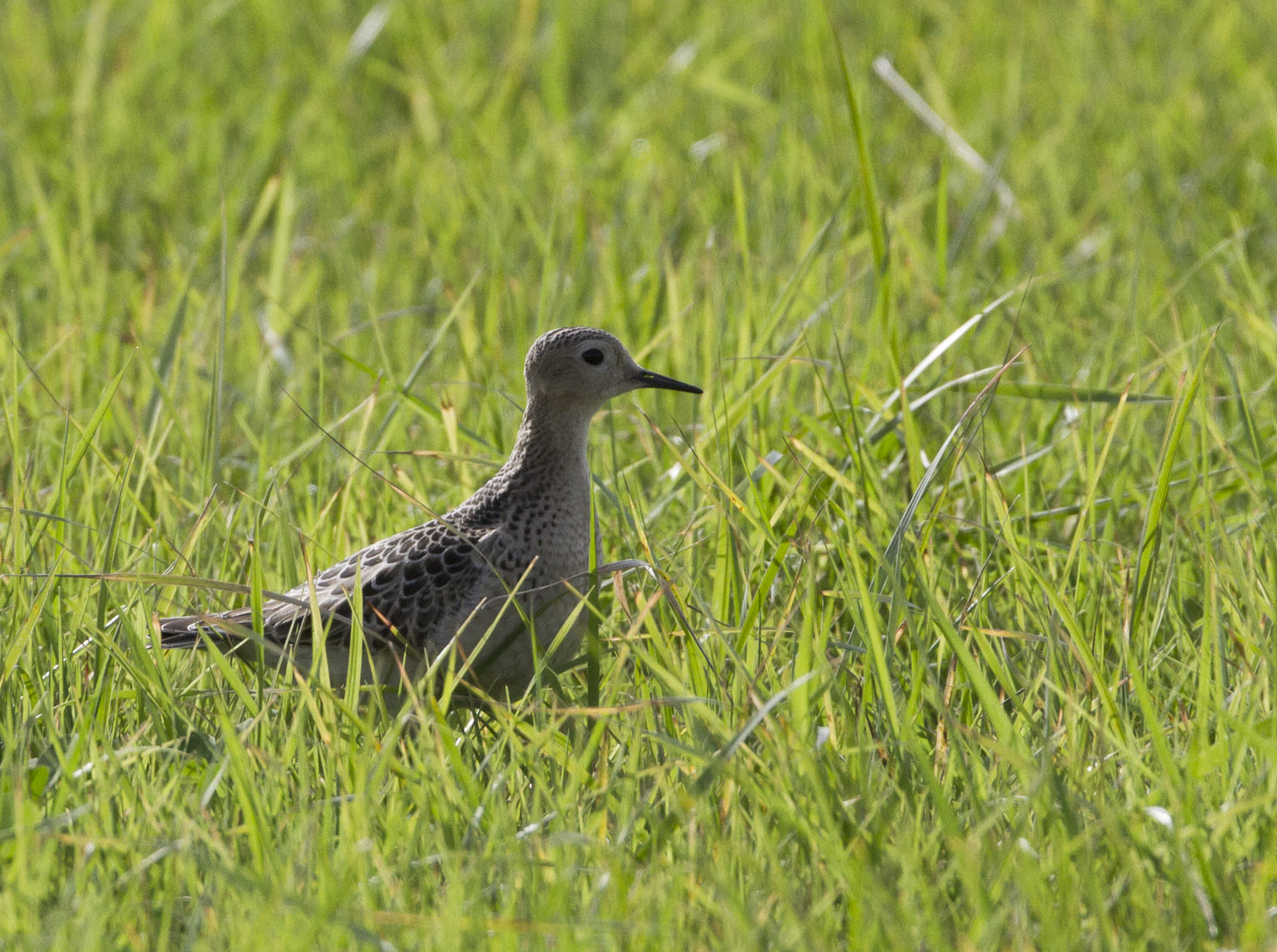
Buff-breasted Sandpiper, Frampton Marsh RSPB, Lincolnshire (Photo: Phil Carter)

Buff-breasted Sandpiper, St. Agnes, Isles of Scilly (Photo: David Aitken)

Red-necked Phalarope, Fairburn Ings RSPB, West Yorkshire (Photo: Joe Seymour)
Sabine's Gulls were reported by seawatchers from eight sites from Hampshire round to Argyll during the week; the moulting adult Laughing Gull was still on Sanday (Orkney) to 7th at least. Just three Ring-billed Gulls were reported, from Black Rock Strand (Kerry) on 3rd and from Dingwall (Highland) and Christchurch Harbour (Dorset) on 4th, the last the only new bird. Gull-watchers found several candidates worthy of scrutiny during the week; Azorean Yellow-legged Gulls were reported with varying degrees of confidence from Rutland Water, Sandymount (Dublin) and Stanwick GPs (Northants), and a near-adult Baltic Gull was claimed in a pig fields near Great Livermere (Suffolk) on 5th. Skua passage was limited, with just a handful of Pomarine and Long-tailed Skuas mostly off southern and western coasts.
Brightening up the landbird line-up were a Bee-eater which flew inland at Land's End on 8th, and four or five Hoopoes in widely scattered locations. Thirty or so Wryneck reports included multiple birds at several sites, and they were almost exclusively along the southern and western coasts of England, Wales and Ireland, the only exception being a belated report of a bird in Hyde Park (London) on 3rd. Showing a similar distribution, but a smaller number of records, was Red-backed Shrike. It was a good week for shrikes: as well as Daurian and Red-backed, there was a Lesser Grey Shrike at Capel Fleet on Sheppey (Kent), which obligingly stayed over the weekend, and Great Grey Shrikes included a cluster in Shetland, one on the Isle of May (Fife), one at Minsmere (Suffolk) and one at Dumpton (Kent).
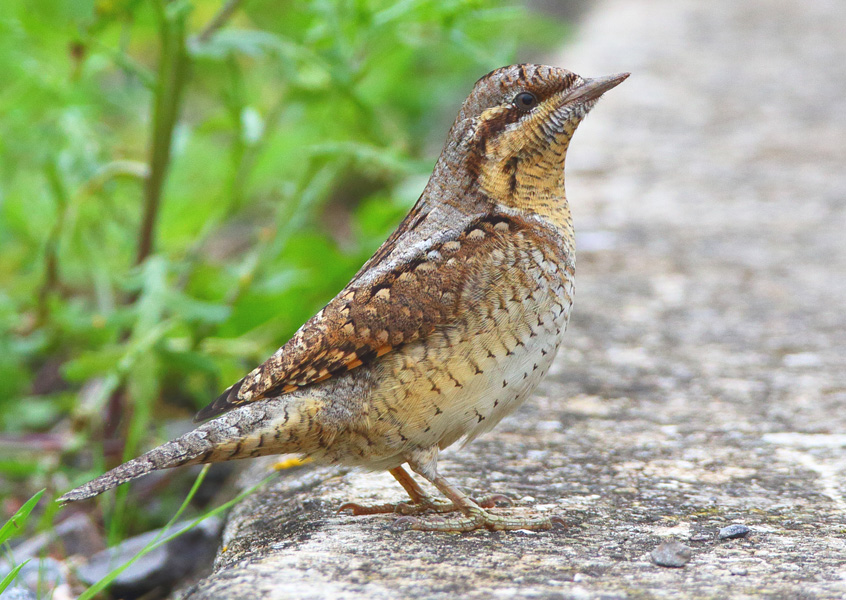
Wryneck, Berkeley, Gloucestershire (Photo: Mike Trew)

Red-backed Shrike, Haroldswick, Unst, Shetland (Photo: Dougie Preston)

Lesser Grey Shrike, Harty Marshes, Sheppey, Kent (Photo: Mike Gould)

Great Grey Shrike, Dumpton, Kent (Photo: Dylan Wrathall)
Short-toed Larks were limited to the extremes of the British and Ireland: Cork produced two birds (Cape Clear and Ballycotton), Scilly at least two (St Agnes and St Mary's), and Shetland four (Sumburgh and Sandwick, both on the mainland, Foula and Fair Isle). A Golden Oriole brightened up the links on North Ronaldsay (Orkney) on 3rd, as did a Red-eyed Vireo on Fair Isle on 6th.
Five Western Bonelli's Warblers showed an almost stereotypical distribution for an autumn vagrant: one on Shetland, one on Orkney, one at Flamborough, one on Scilly, and one in County Cork. A sixth Bonelli's warbler sp., unidentified to species but most probably another Western, was at Hunstanton in Norfolk, just to complete the set. Possible Dusky Warblers were reported from Arranmore Island (Donegal) and The Naze (Essex), though neither was confirmed. Two Radde's Warblers were similarly widely split, at Berry Head (Devon) and on the Isle of May (Fife).

Western Bonelli's Warbler, Garinish Point, Cork (Photo: Sean Cronin)
The Yellow-browed Warbler invasion showed no signs of abating, with exactly 500 records carried on Bird News Extra this week at the time of writing. Most were, predictably, along the east and south coasts, but many inland counties got in on the act, among them Surrey, Berkshire, London, Oxfordshire, Buckinghamshire, Cambridgeshire, Leicestershire, Staffordshire and West Yorkshire, and there were plenty on western headlands too. There were just three Arctic Warblers, two on Shetland (one at Loch of Voe from last week, and a new bird at Seafield, Lerwick) and one around the legendary warbler hotspot of Newford Duckpond on St Mary's (Scilly). The flurry of Greenish Warblers in late August seems a distant memory now: just one was found this week, on South Uist (Outer Hebrides) on 5th.
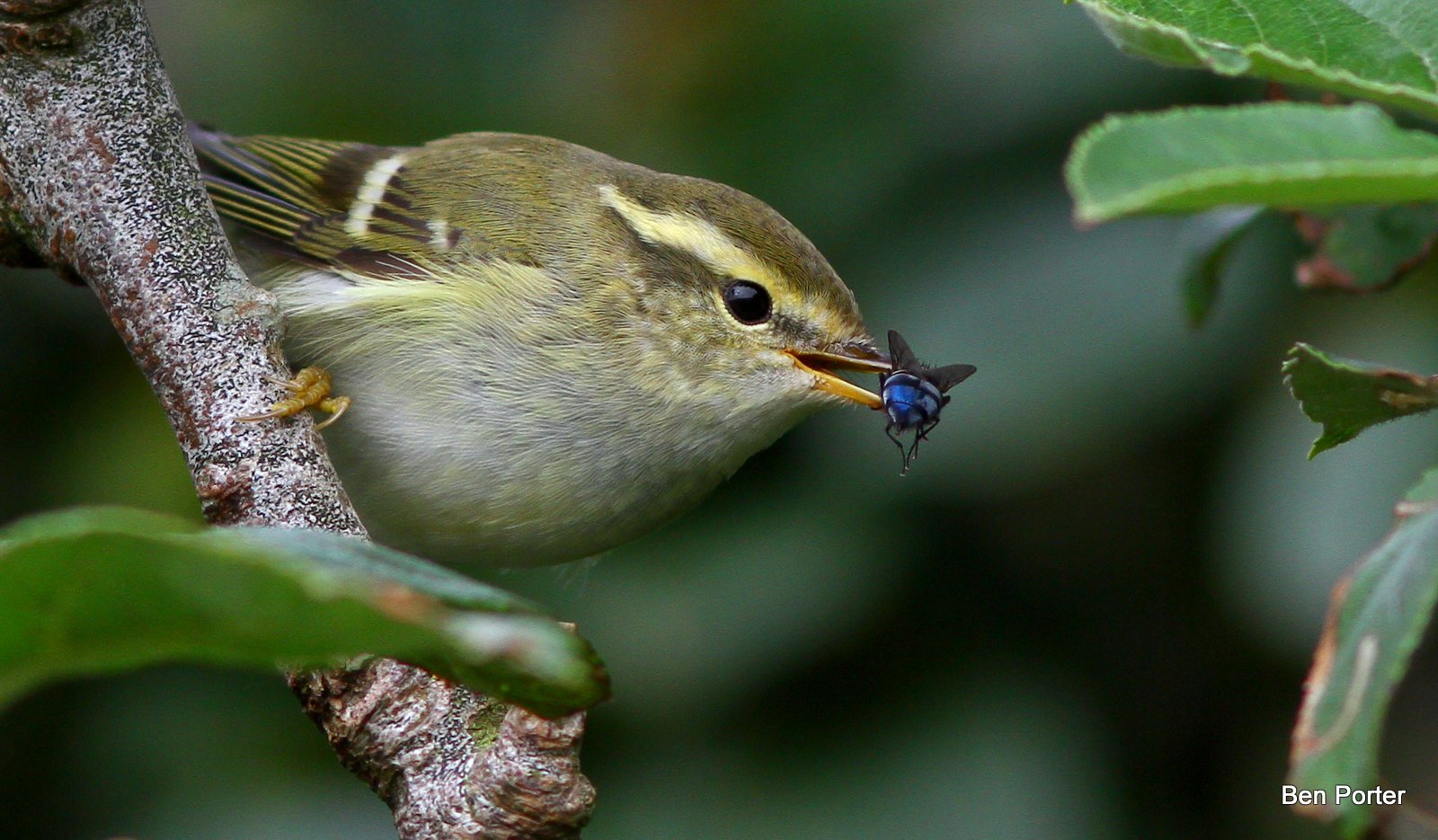
Yellow-browed Warbler, Bardsey Island, Gwynedd (Photo: Ben Porter)
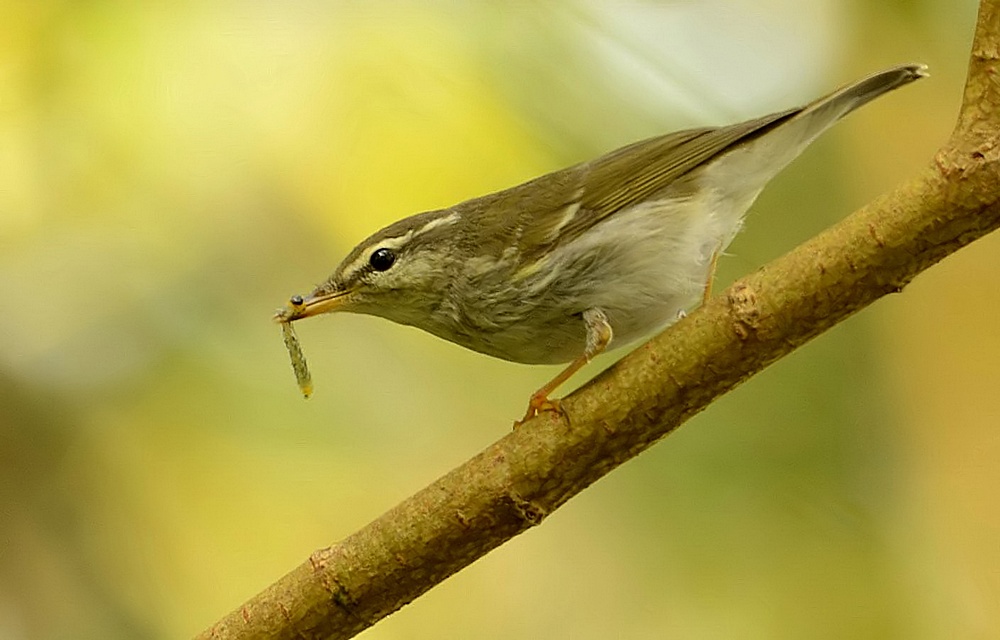
Arctic Warbler, St. Mary's, Isles of Scilly (Photo: Dave Perrett)
Thick-billed Warbler aside, the majority of reports of the tricky Acrocephalus and Iduna genera were inconclusive this week. Possible Great Reed and Paddyfield Warblers at Mull of Galloway and South Gare (Cleveland) respectively came to nothing concrete, and the same was true of reports of Blyth's Reed Warbler at Red Rocks (Cheshire) and Shooter's Pool, St Mary's (Scilly). On Unst, however, the Blyth's Reed Warblers at Norwick and Valyie hung around to 7th and 8th respectively, and Shetland also claimed the only two Marsh Warbler reports of the week, from Vidlin (Mainland) and Funzie (Fetlar). Last week's Sykes's Warbler at Garinish Point (Cork) was not seen after 2nd.
Turning to the genus Hippolais, all the action was in the southwest: an Icterine Warbler was on St Agnes (Scilly) on 7th, and Melodious Warblers were at Sennen (Cornwall) to 4th, Rame Head (Cornwall) on 6th, and Cape Clear (Cork) on 8th.
The week's only Lanceolated Warbler was on Fair Isle in the late afternoon of 6th. From southwest to northeast, Barred Warbler reports were received from St Agnes (Scilly), Garinish Point (Cork), Churchtown (Wexford), Breakwater Country Park (Anglesey), Whitburn Coastal Park (Durham), the Isle of May (Fife), Tullos Hill (Aberdeenshire) and, inevitably, Fair Isle again. Three possible Central Asian Lesser Whitethroats were claimed in the northeast, from Girdle Ness (Aberdeenshire), Low Newton-by-the-Sea (Northumberland) and Whitburn (Durham), though none were subsequently confirmed. Four Subalpine Warblers were noted: at Whitburn Coastal Park (this week's warbler hotspot!) and Druridge Pools (Northumberland) to 5th, on St Agnes (Scilly) to 6th, and on Yell (Shetland) to 8th. This last bird was assigned by different observers to both Eastern and Western forms. The handsome male Sardinian Warbler continued to frequent Mire Loch (Borders) to 8th at least.
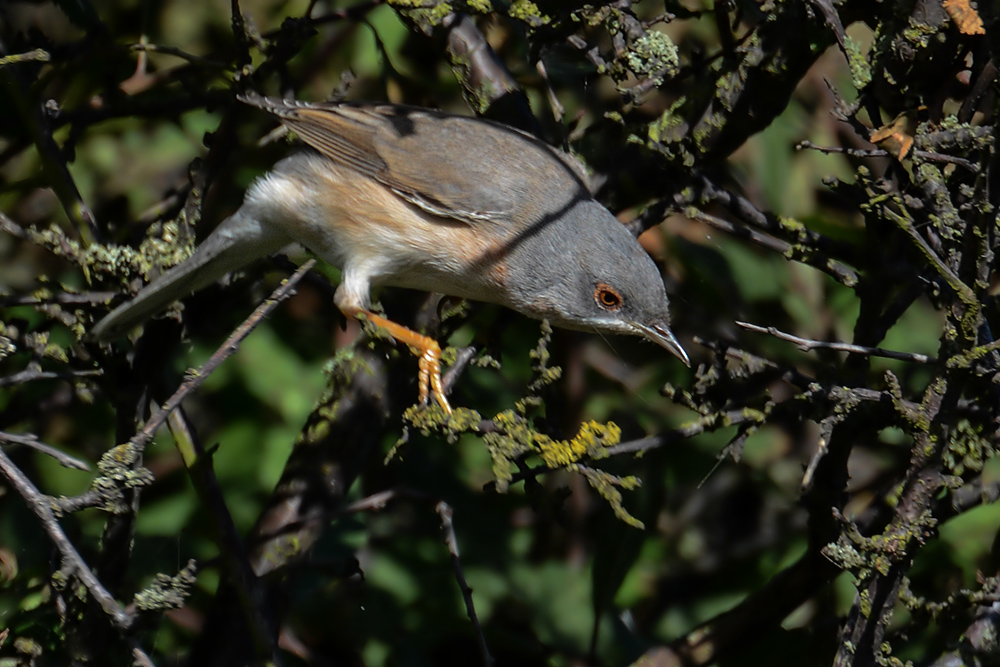
Subalpine Warbler, Druridge Pools, Northumberland (Photo: Derek Bilton)

Subalpine Warbler, Mid Yell, Yell, Shetland (Photo: Dave Hutton)
At least nine Rose-coloured Starlings, all juveniles, appeared this week: at Llandysul (Ceredigion), Lizard (Cornwall), Tory Island (Donegal), Caister (Norfolk), St Agnes and Bryher (Scilly), Hoswick (Shetland) and Selsey Bill (West Sussex). Bluethroats were at Rattray Head (Aberdeenshire), on North Ronaldsay (Orkney) and on St Mary's (Scilly). The only Thrush Nightingale was one trapped and released on Portland (Dorset) on 9th.

Rose-coloured Starling, St. Agnes, Isles of Scilly (Photo: Tom Hines)
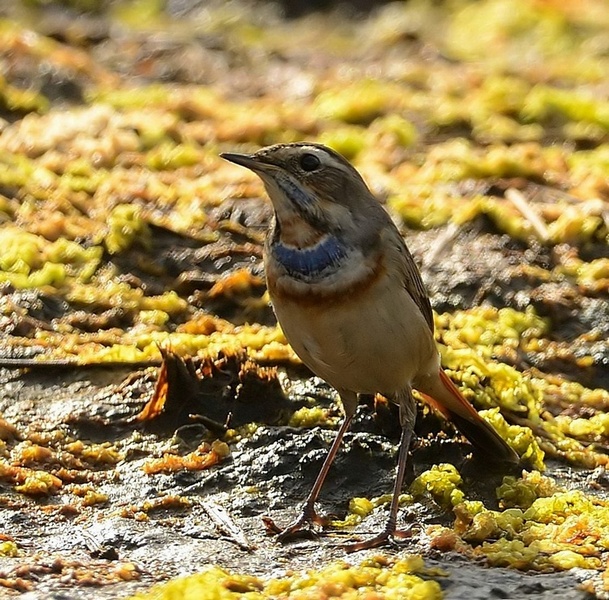
Bluethroat, St. Mary's, Isles of Scilly (Photo: Dave Perrett)
Three Siberian Stonechats appeared on the pages of Bird News Extra this week: last week's showy individual at Trimley Marshes (Suffolk), a new bird at Gibraltar Point (Lincs) on 5th and 6th and a possible at Stromness (Orkney). The majority of records of Red-breasted Flycatchers, that quintessential autumn passage migrant, were scattered all down the east and south coast, but west-coast birds were at Kilbaha (Clare), Kenfig (Glamorgan), Bardsey Island (Gwynedd) and Port Nish (Lewis), as well as a cluster of records on Scilly (Bryher, St Agnes and St Mary's).
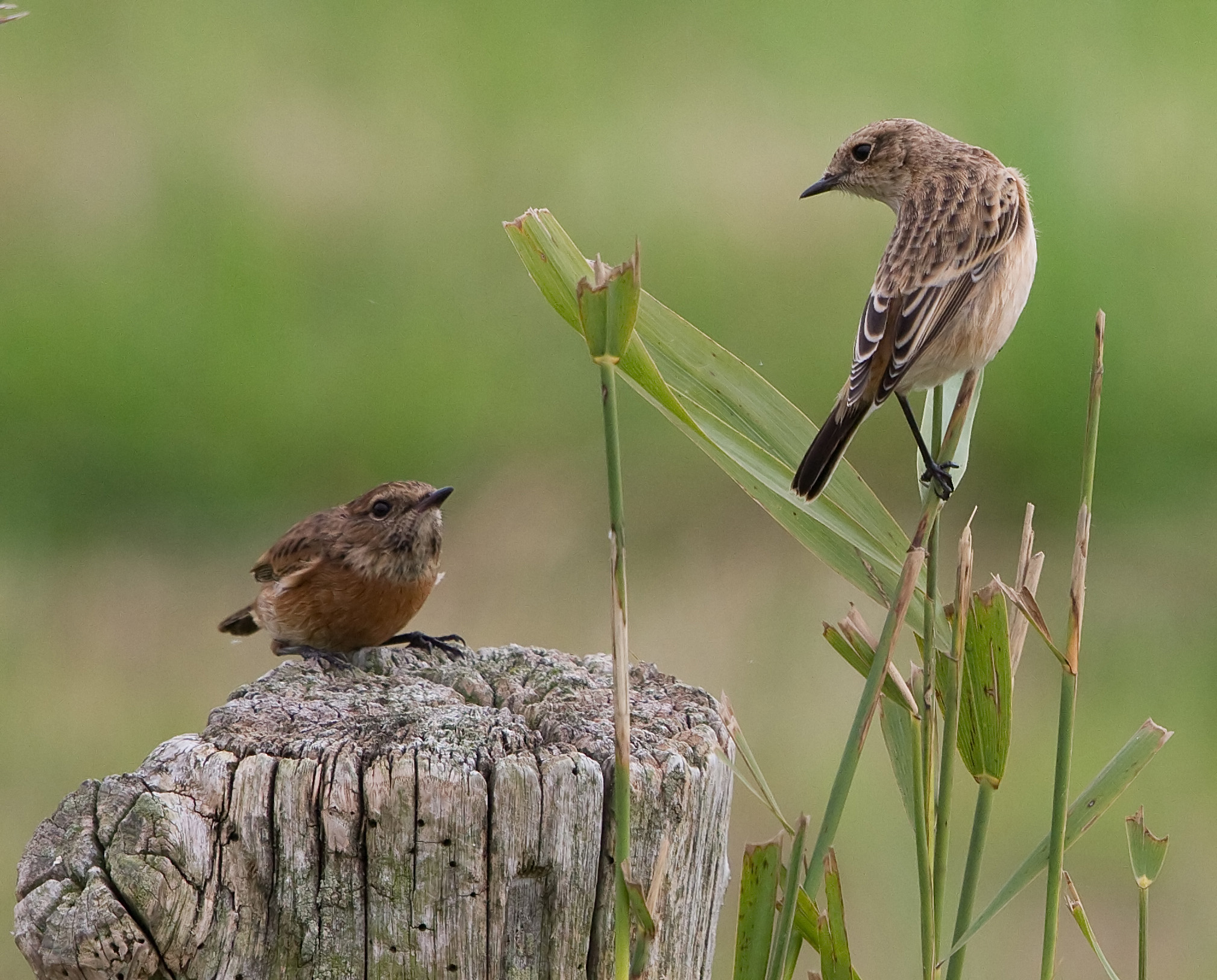
Siberian Stonechat, Trimley Marshes SWT, Suffolk (Photo: Nick Brown)

Siberian Stonechat, Gibraltar Point NNR, Lincolnshire (Photo: Russell Hayes)

Red-breasted Flycatcher, Donna Nook, Lincolnshire (Photo: Russell Hayes)
Around fifteen Richard's Pipits were reported this week, mostly from southern and eastern coasts; the inland exception was a bird over Milford Common (North Yorkshire) on the morning of 8th. Most of the week's Olive-backed Pipits were clustered in the Northern Isles, but outliers were at Whitburn Coastal Park (Durham), Spurn (East Yorks) and St Mary's (Scilly). A Pechora Pipit was at Isleburgh (Shetland) on 4th, and Red-throated Pipits were on Out Skerries (Shetland) and over Rainham Marshes (London).
A Serin showed well near Mizen Head in County Cork. Hornemann's Arctic Redpolls were at Eoropie (Lewis) and Valyie (Unst) and Common Rosefinches were reported from Scilly, Lundy, Cork (two), Donegal, Foula, Fife and Norfolk. The faltering Two-barred Crossbill influx continued with birds at Leith Hill (Surrey), Lynford Arboretum (Norfolk) and Spurn (East Yorks) but there were no records from Broomhead Reservoir in South Yorkshire — is no-one looking any more, or have the birds genuinely departed? Little Buntings provided interest to a number of sites on Shetland and the east coast; the only inland bird was one that found its way into a mist-net near Little Downham (Cambridgeshire) on 7th. Lastly, three Rustic Buntings were reported: at Donna Nook (Lincs) on 3rd and 4th, at Spurn (East Yorks) on 7th and on Fetlar (Shetland) on 8th and 9th.

Little Bunting, Skaw, Unst, Shetland (Photo: Dougie Preston)
Photo of the Week

Osprey, Llyn Aled, Conwy (Photo: Mike Nesbitt)
For some species, there are now established sites at which top-quality photographs can be reliably taken. Although such images still require patience and skill on the part of the photographer, the resulting images can become somewhat 'samey'. In some cases, they can also look staged or even 'too perfect' to reflect our real-life experience of natural encounters. Despite lacking the polish of a 'Rothiemurchus special', Mike Nesbitt's photo of an unringed Osprey carrying an unfarmed fish species taken at a remote moorland lake in North Wales has a genuine, natural appeal. Mike's website contains seven shots from this close-range fly-by, his favourite of which (and ours) he has shared with us at BirdGuides. Both bird and fish are nicely outlined and this species' technique of carrying its prey facing forwards to reduce wind resistance is well illustrated. The colourful eyes of both predator and prey complete the story.
Other notable images

Little Owl, undisclosed site, Lancashire (Photo: Austin Thomas)
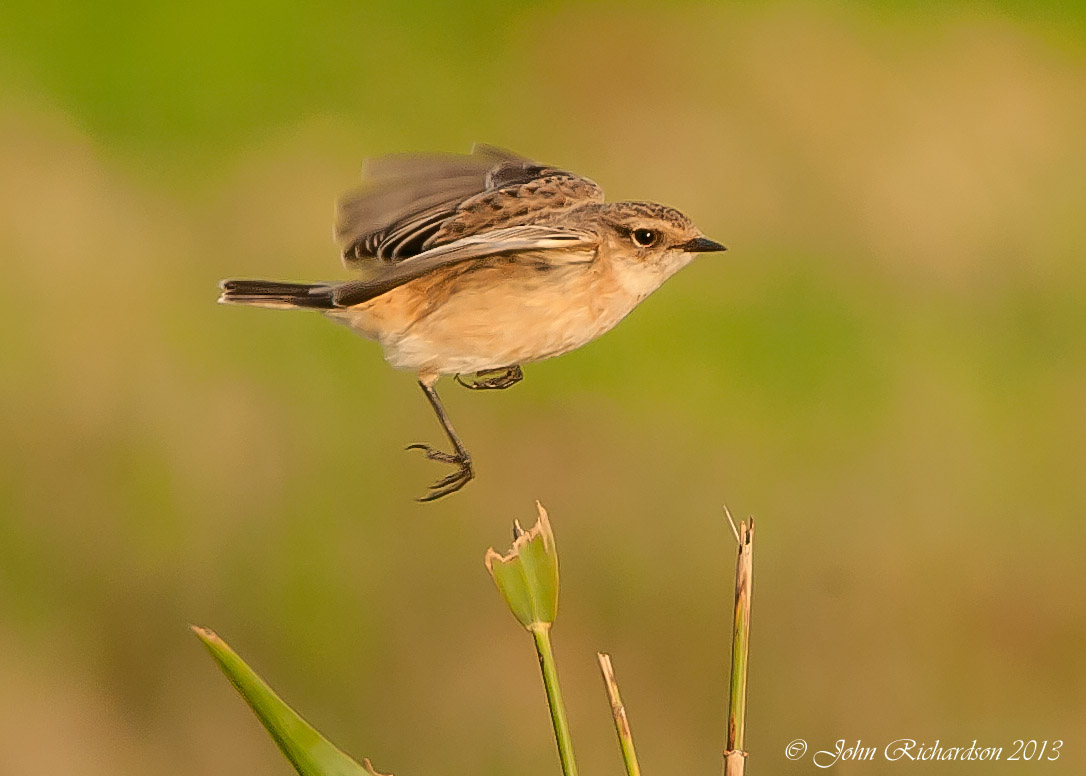
Siberian Stonechat, Trimley Marshes SWT, Suffolk (Photo: John Richardson)

Merlin, Point of Ayre, Isle of Man (Photo: Sean Gray)
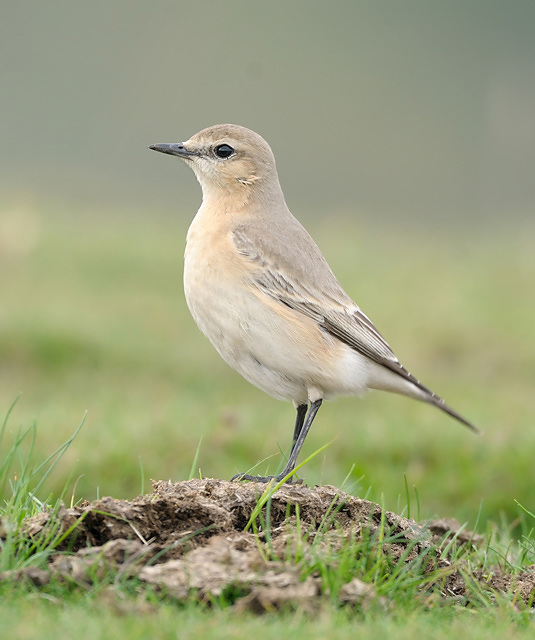
Isabelline Wheatear, Martin's Haven, Pembrokeshire (Photo: Ian Curran)

Jay, undisclosed site, Lancashire (Photo: Tom Charles)

Dunlin, Toft Newton Reservoir, Lincolnshire (Photo: Nick Clayton)
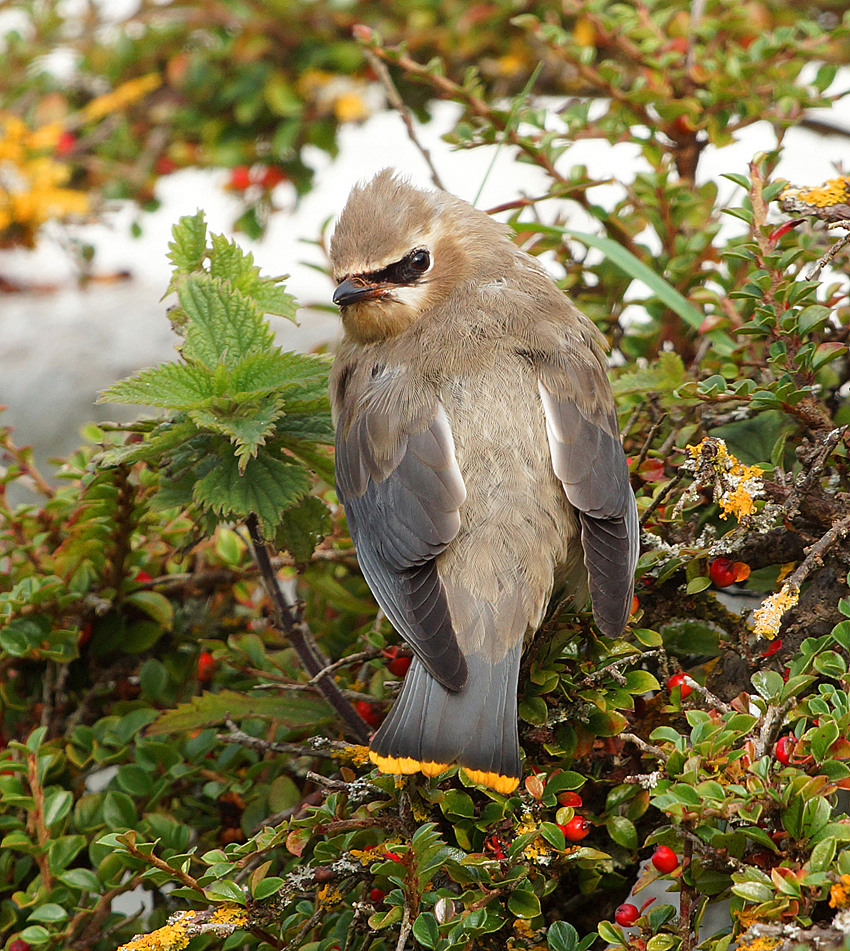
Cedar Waxwing, Tiree, Argyll (Photo: Jim Dickson)
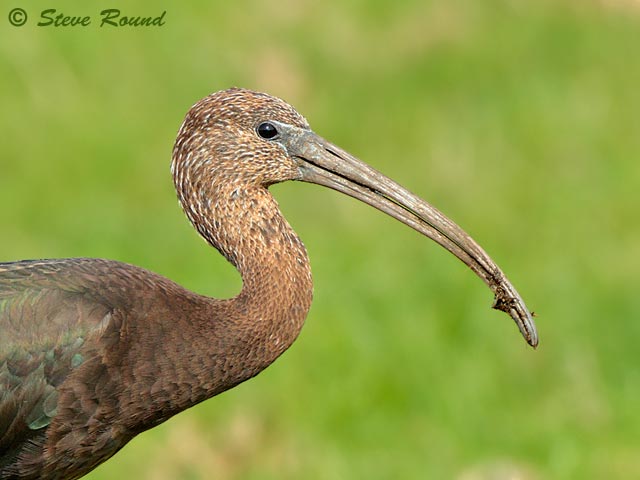
Glossy Ibis, Doffcocker, Greater Manchester (Photo: Steve Round)
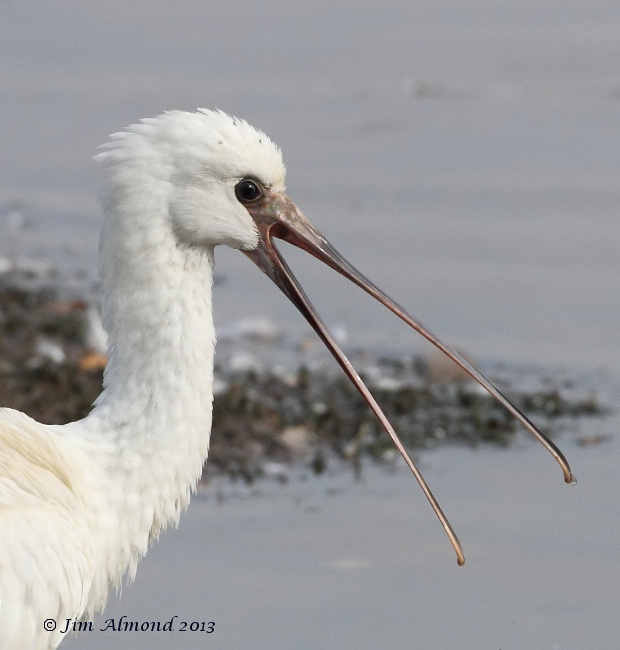
Spoonbill, Venus Pool NR, Shropshire (Photo: Jim Almond)

Long-eared Owl, Quendale, Mainland, Shetland (Photo: Dave Hutton)
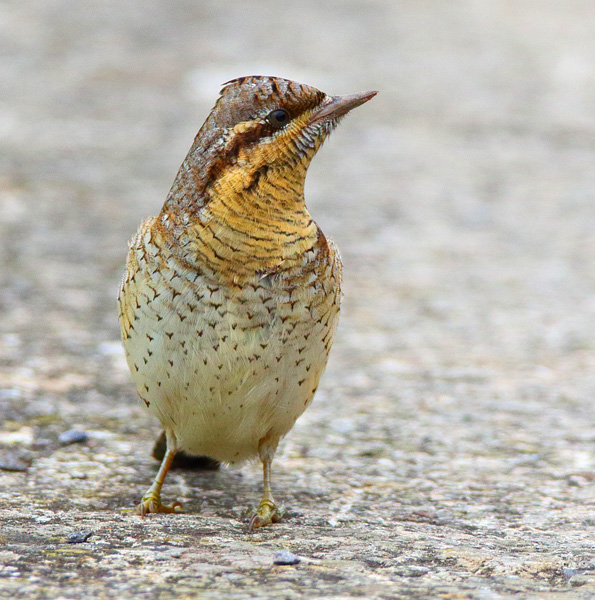
Wryneck, Berkeley, Gloucestershire (Photo: Mike Trew)

Bearded Tit, Lakenheath (Hockwold) Fen, Suffolk (Photo: Steve)

Lapland Bunting, Flamborough Head, East Yorkshire (Photo: Lee Johnson)
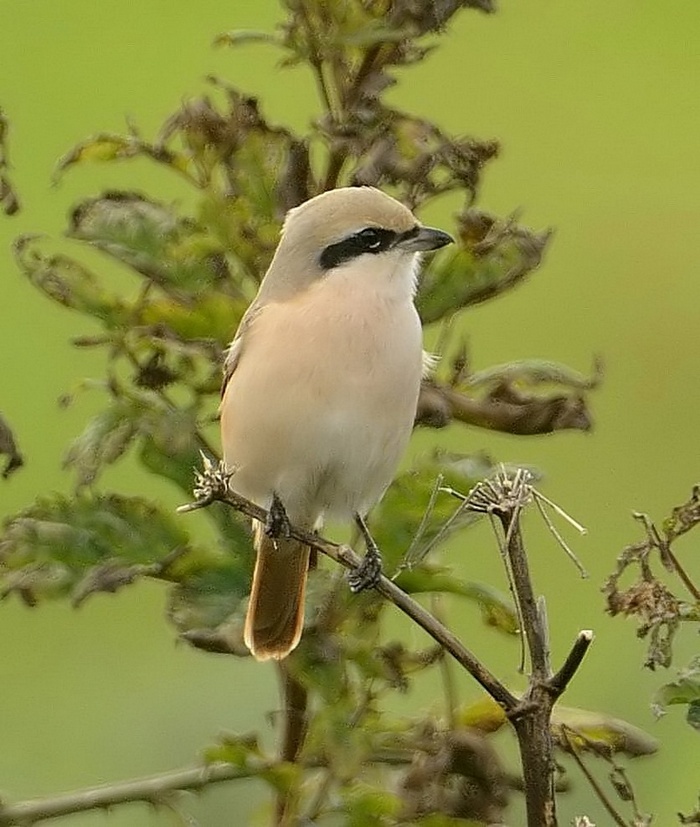
Daurian Shrike, Pendeen, Cornwall (Photo: Dave Perrett)

